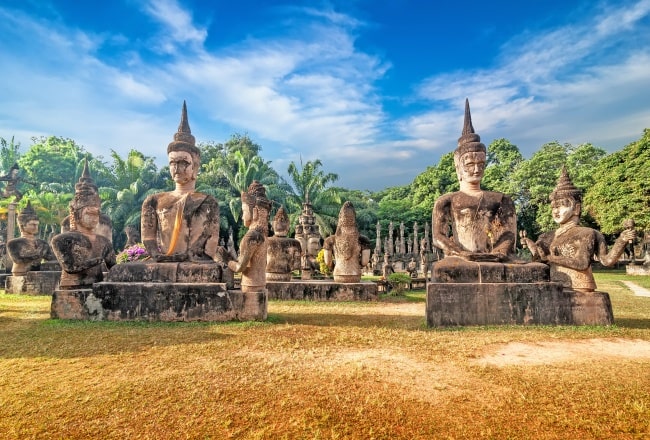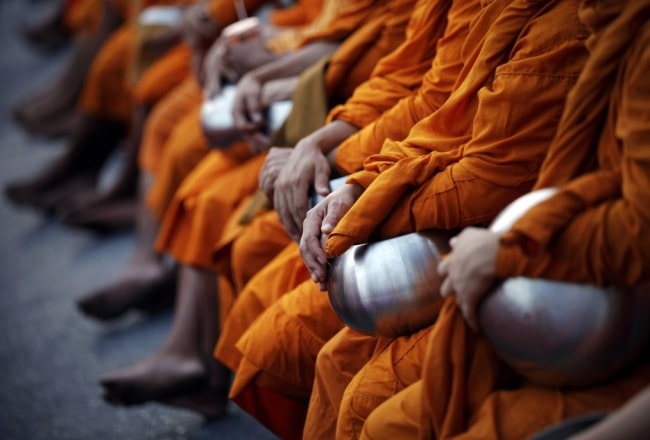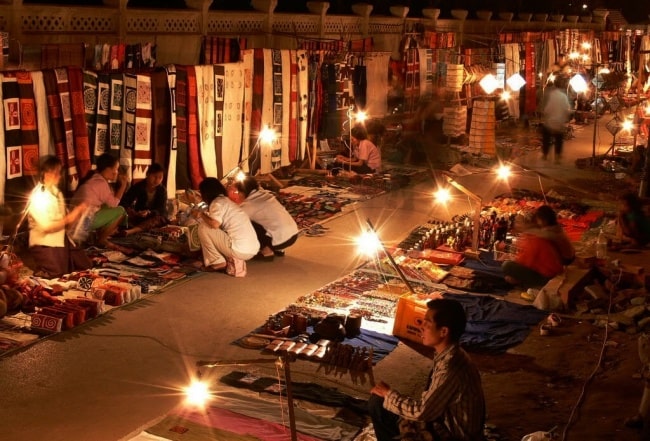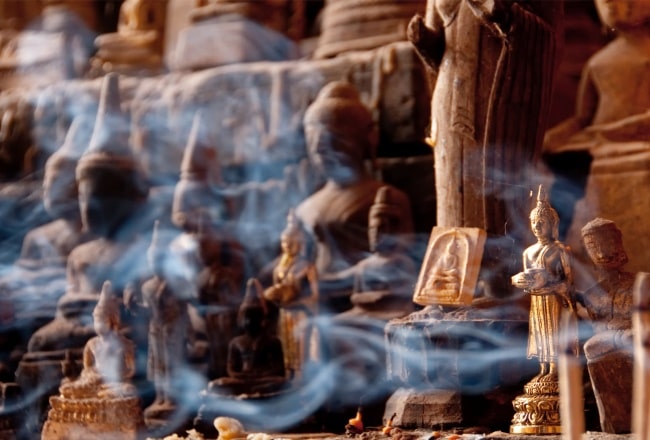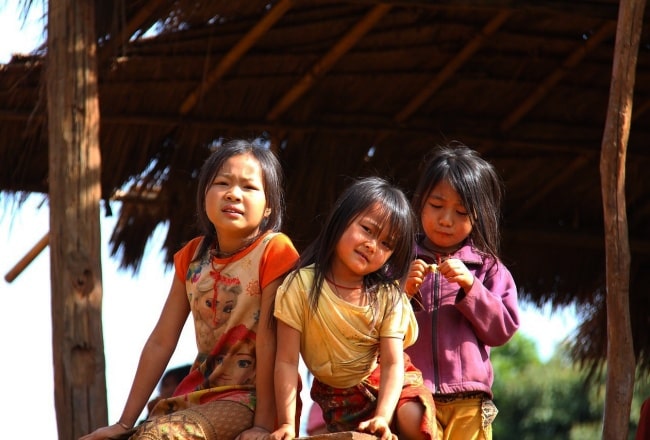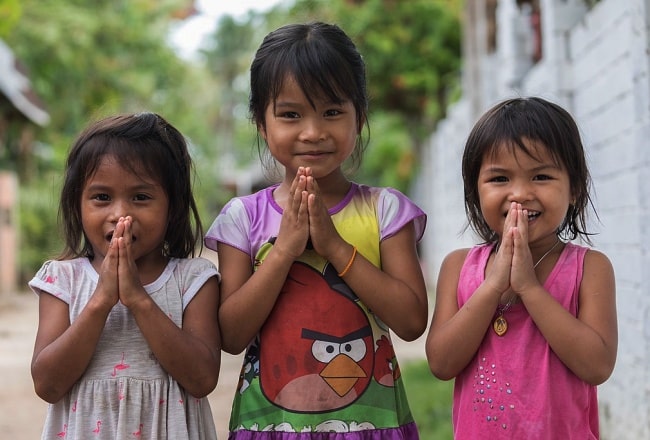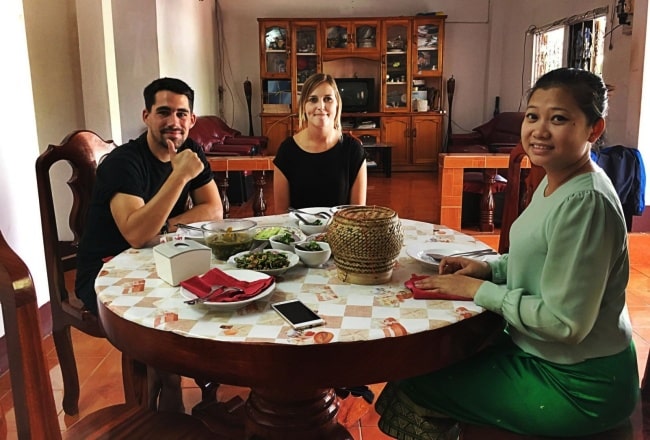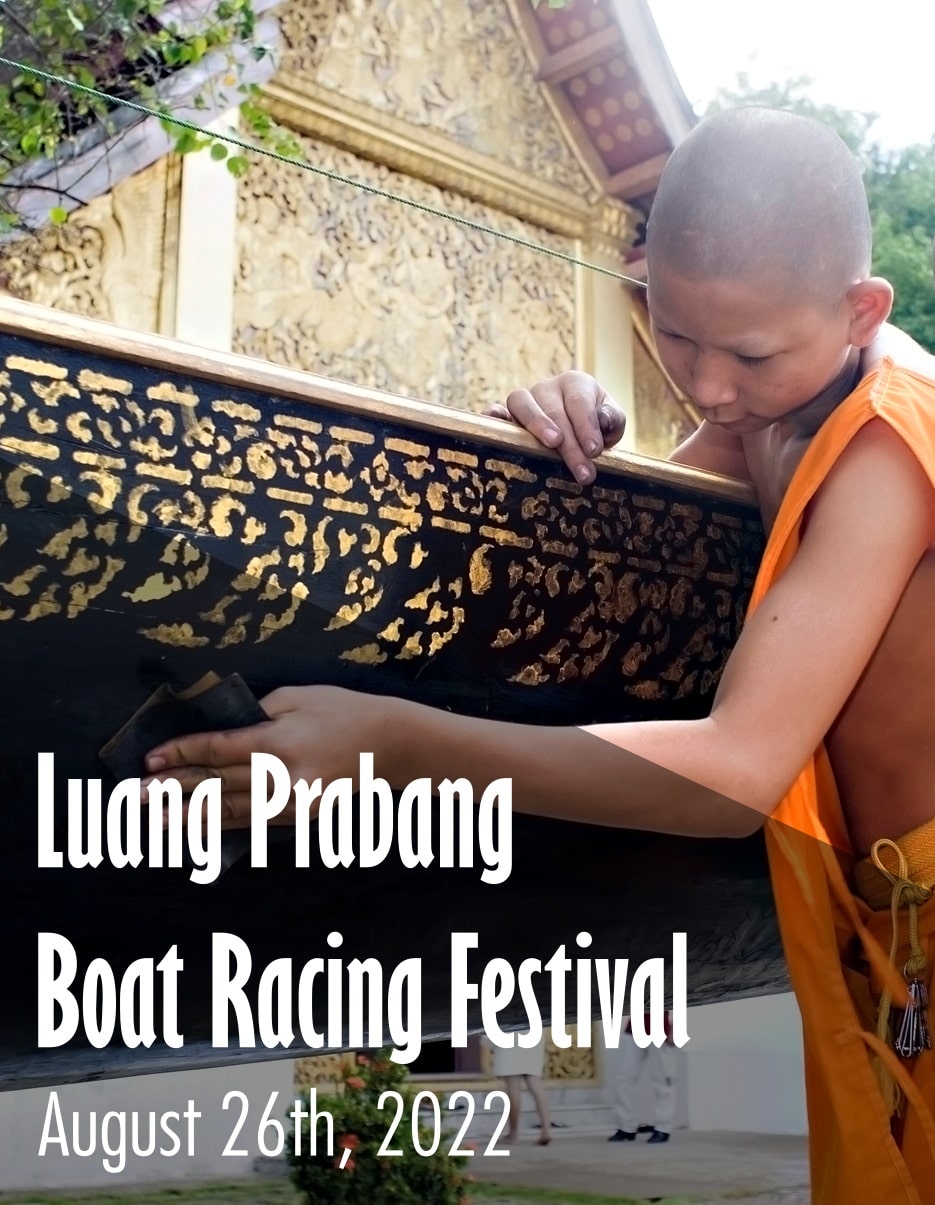1. Do not touch a monk
Touching a monk or novice is considered rude and is totally taboo if you are a woman. Women should also be careful not to accidentally brush up against a monk’s robes on the street, in a temple or sharing a tuk-tuk.
Women should not hand anything directly to a monk, but instead should pass the item to a male intermediary. The only exception to this rule is giving morning alms to monks by placing the offering of food or money into the monk’s alms bowl.
2. Do not trek without a guide
While Laos is a comparatively safe country in terms of violent crime and theft compared to its neighbors, it is not without its own brand of danger. 260 million cluster bombs were dumped on Laos in the 1960’s and are still killing or injuring over 100 people every year.
If you are trekking, stay on the path and better yet, go with a guide who knows the land and the language and can keep everyone safe.
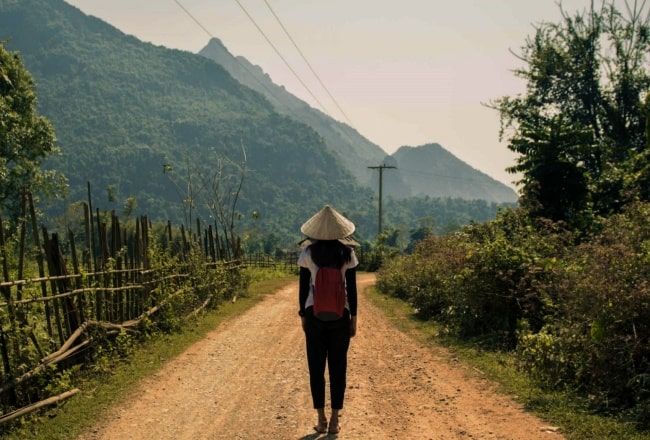
3. Do not argue with police
Should you be stopped by the police for any minor offence, it is inadvisable to put up a fight or go to the police station. Often the underpaid police force is simply looking to extort money from tourists. Just pay the bribe and be on your way.
It is no use making rational arguments about the dozens of Lao people you have seen doing the same thing that you allegedly got stopped for. The justice system is not the same in Laos as other countries, and the best thing for everyone is to comply, save face and move on.
4. Do not touch anyone with your feet
Stepping over someone who is seated is the height of rudeness in Lao culture, since the head is considered high and the feet are the lowest part of the body. The best bet is to keep your feet on the floor, not tucked under you or on a chair.
5. Do not shout, argue or rush
Lao people want to save face at all costs, and they do never shout or argue loudly. Service can be slow in shops and restaurant. Practice patience, and do not expect anyone to rush because you are in a hurry. Take it easy, bite your tongue and enjoy the unhurried, unstressed Lao lifestyle.
6. Do not make public displays of affection
The Lao are not publicly affectionate among friends or romantic partners, and public hugging or kissing is frowned upon. It is against the law for foreigners to engage in sexual activity with a Lao person outside of marriage. If you do, it is at your own risks.
7. Do not do drugs
Alcohol is free flowing, and you may be encouraged to drink more than you would like. But you might also find that some illegal drugs are prevalent.
Exercise extreme caution. If a tuk-tuk driver offers you prostitutes or drugs unprovoked, your safest bet is to turn him down. Some dealers are in cahoots with the police and will turn in their clients.

8. Do not bathe or walk around in a bikini
You will see Lao people swimming fully clothed, wrapped in a sarong or sometimes in jeans. It is advised for women to bring a sarong. You can always take it off once you are in the water, but you will avoid uncomfortable stares.
In the same vein, walking around town in swimwear is not culturally acceptable for men or women, so when you go swimming or tubing bring a shirt or sarong to cover up when you get out of the water.
9. Think before riding a motorbike
Motorbikes are a popular mode of transportation in Laos, but ride at your own risk. There is no trauma center in the country, and should you get into an accident, you will have to get across the border to Thailand for treatment.
There is rampant drinking and driving in Laos, which makes the roads more dangerous at night. Many people, including children, drive without a license. If you do take to the road on two wheels, drive defensively and always keep your eyes open.
Here is some more safety and precautions for Laos
